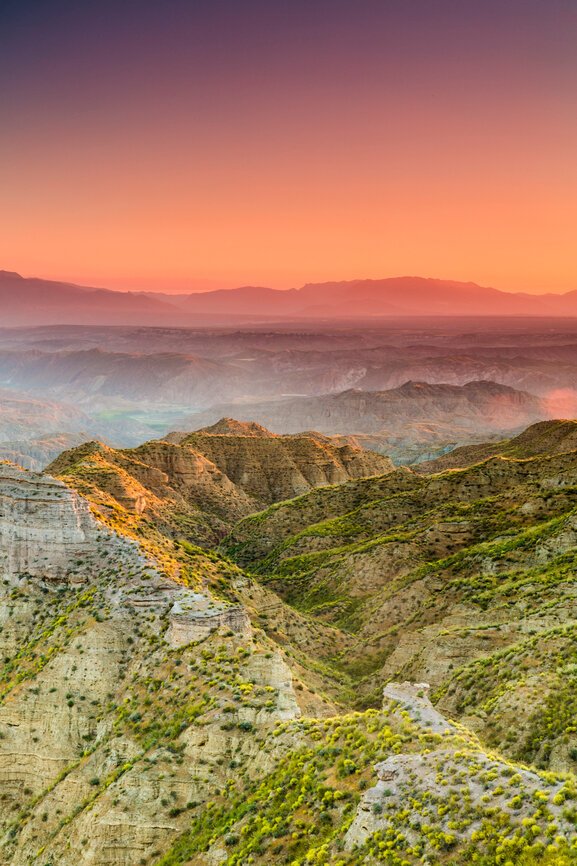
What Will The Next Four Years Of Climate Policy Look Like?
New Administration, New Climate Plans
The US is one of the leading climate polluters in the world, and with temperatures increasing rapidly each year, we have a huge responsibility to get our carbon emissions in check fast. With a new administration coming into office, the next four years will be as crucial as ever.
“Our government will need to go above and beyond in working with world leaders to turn things around for our planet.”
“If the United States can show how to take aggressive action against climate change while simultaneously becoming more prosperous and happy, other countries might follow,” Nathanael Johnson wrote for Grist last year. Our government will need to go above and beyond in working with world leaders to turn things around for our planet.
With that in mind, here’s what we can expect for US climate policy over the next few years and how we can push for radical climate action.
Current Climate Plans & Incremental Agendas
President Joe Biden’s climate plans have been lauded as the most ambitious any incoming American president has ever proposed. “The plan is sprawling: investing $400 billion over ten years in clean energy, conserving 30 percent of America’s lands and waters by 2030, and prioritizing environmental justice are just the tip of the plan,” says Ira Flatow in a recent Science Friday podcast episode. Other notable propositions include rejoining the Paris Agreement, a goal of net-zero emissions by 2050, and working more closely with the agriculture industry.
Although President Biden has publicly and politically distanced himself from the Green New Deal, his plans reveal how progressive players like Alexandria Ocasio-Cortez and climate activists have inspired a deeper commitment to the issue. For example, Biden’s plan includes strong language about climate justice and holding major polluters such as General Electric, Koch Industries, and ExxonMobil accountable. Information on what exactly this will look like is yet to come, though it’s worth noting that the plan includes a new division inside the Department of Justice specifically dedicated to criminal environmental prosecutions.
Additional initiatives include President Biden’s commitment to ending leasing for fossil fuel extraction on public lands and investing 40 percent of his $2 trillion clean energy plan into communities living on the front lines of poverty and pollution.
“It’s worth noting that President Biden’s plan includes a new division inside the Department of Justice specifically dedicated to criminal environmental prosecutions.”
This all sounds like a great path forward; however, as Emily Atkin, journalist and founder of the newsletter HEATED, told Science Friday, it’s important to remember that “plans are not policy.”
The incoming administration has gone to great lengths to frame their plan as beneficial to the economy and job creation. “The entire Biden climate plan is basically a renewable energy stimulus plan,” Atkin explains. This aspect of the president’s climate plan doesn’t fall too far from the Green New Deal’s holistic vision, yet it is more narrowly focused and less aggressive. It also lacks language surrounding the banning of fracking or phasing out fossil fuels, which could further appease the oil giants and their political interests. In order for Biden to reach his own climate goals, he will have to take the fossil fuel industry head-on.
Undoing Damage & Avoiding Obstacles
“President Biden hopes to collaborate on these endeavors and increased scientific research, though only time will tell who is willing to negotiate.”
The first main hurdle that the incoming administration will have to tackle is navigating Congress and the members who are currently uninterested in furthering climate policy. Recent Georgia Senate wins give President Biden’s plans a fighting chance, but getting bi-partisan support for progressive climate policy will be a battle on its own (and may require abolishing the filibuster).
Even still, there is a lot that the Biden administration can do. The president’s plans to reinstate at least five of the environmental rules rolled back by the previous administration is a good start. These rules include a move towards electric vehicles and capping methane from oil and gas. Further, organizations and experts have outlined executive actions President Biden can take as soon as he is sworn into office based on his earlier commitments. None of these will necessarily reverse climate change, but some immediate action is possible.
When Congress reauthorizes the Trade Promotion Authority this year—which regulates the president’s trading power—many believe climate change will receive new attention. The incoming administration aims to leverage the influential American consumer market to cut carbon emissions from manufactured and imported goods. President Biden hopes to collaborate on these endeavors and increased scientific research, though only time will tell who is willing to negotiate.
Fresh Perspectives & Earned Experience
“Experienced individuals can certainly help with the time constraints climate change presents.”
As we wait to see how much of these plans will be put into action, Rebecca Leber, a Climate and Environment Reporter for Mother Jones in Washington, D.C., reminds us again that “Plans are not policy, but personnel typically [are].” Over the last few months, the new administration has rolled out a series of appointments much to climate activists’ delight and horror. Some are celebrated, like Gina McCarthy, Jennifer Granholm, and the first Native American pick by a presidential candidate Deb Haaland; she is set to lead the Department of the Interior. Yet, the selection of John Kerry as presidential special envoy on climate change and Tom Vilsack as head of USDA have received widespread criticism. Atkin argues, however, that experience is helpful in gridlocked situations.
According to Atkin, many officials who worked under the Obama administration have since reassessed their work and changed their tones about climate change, even regretting their failure to act with urgency before. This is a wonderful thought, and experienced individuals can certainly help with the time constraints climate change presents. But as Evan Weber of Sunrise Movement notes, “If we’re gonna be in a situation where we’re depending on the executive branch to lead all our climate action, we need a lot of creativity […] and fresh perspective.” For now, it looks like a combination of new blood and old haunts will make up the force against climate change.
How To Hold The New Administration Accountable
Stay Involved in the Climate Movement
When the election was called for Joe Biden, many proclaimed that this is when the real work begins—and this is especially true when it comes to climate change. This overview of what the next four years could look like is also only the beginning, and staying involved will require engagement and keeping up-to-date with the latest policy changes, as well as activism work.
Keep Up to Date on Climate Policy
Having a basic understanding of climate policy is immensely helpful, though a never-ending task. Subscribe to trusted publications to help you consistently gather current climate information. Newsletters such as HEATED and Hot Take make climate issues a little less overwhelming, too. Consider devoting an hour each week to catch up on climate news and unpack changing climate policy with these resources.
“The more you know about climate change, the better advocate you can be to fight against it.”
Deepen Your Understanding of Environmental Issues
When you find yourself with a little extra time, the next best step is to arm yourself with knowledge. The more you know about climate change, the better advocate you can be to fight against it. These books are all wonderful places to start on your journey towards becoming a climate activist.
Listen to and Support Those Doing the Work
Being a well-informed member of this fight is vital. Organizations such as Sunrise Movement and the International Indigenous Youth Council are key progressive voices to pay attention to and support. In addition, you can follow these climate activists of color on social media.
Audrey Stanton was born and raised in the Bay Area and is currently based in Los Angeles. She works as a freelance writer and content creator with a focus in sustainable fashion. Audrey is deeply passionate about conscious living and hopes to continue to spread awareness of ethical consumption.




